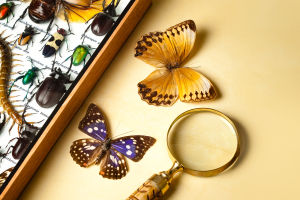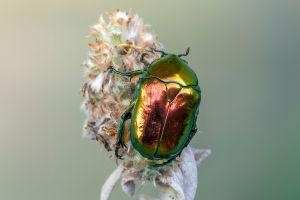Have you ever heard about the Rusty Patched Bumble Bee? It might sound a little unfamiliar, but trust us, it's a fascinating creature worth knowing!
Today, we are diving deep into the life of Bombus affinis—one of North America's most unique and endangered bees. Stick around, and let's explore its world together!
Where the Rusty Patched Bumble Bee Used to Thrive
We might be surprised to learn that the Rusty Patched Bumble Bee once lived widely across eastern and midwestern United States, stretching north into Ontario, Canada, east to Quebec, and south all the way to Georgia. It even reached westward to the Dakotas! Sadly, within this historical range, about 87% of their population has disappeared. In 2017, it officially became the first bumble bee species on the U.S. mainland to be listed as endangered.
What Makes This Bumble Bee So Special?
Unlike many other bees, members of B. affinis are pretty big. Like other bumble bees, they live in eusocial colonies, meaning they work together as a team. Most of their nests are built underground, often inside abandoned rodent burrows. In captivity, a single colony can host up to 2,100 bees, but in the wild, the colonies are usually much smaller. Their diet includes nectar and pollen from plants like Abelia grandiflora, Asclepias syriaca (common milkweed), and Linaria species.
- Here's something really cool: their colonies smell almost identical to those of Bombus terricola, making it super tricky for predators and parasites to tell them apart!
The Bee's Family Tree
Our buzzing friends belong to the Apinae subfamily and are closely related to Bombus franklini, another North American bumble bee. Globally, there are around 250 species in the Bombus genus, but only about 50 call the U.S. and Canada home. What’s interesting is that B. affinis worker bees and queens show different color patterns, making it easier for observers to tell them apart.
Spotting a Rusty Patched Bumble Bee
When we try to spot one, the differences between queens, workers, and males are quite noticeable. Queens are larger, about 20–22 millimeters long and 9–11 millimeters wide, while workers are smaller, around 10–16 millimeters long and 6–9 millimeters wide.
Both queens and workers have black hair covering most of their head, legs, and abdomen, with bright yellow on parts of the abdomen—except near the tip. Workers also sport a distinct rust-colored patch in the middle of their abdomen, which gives the species its name!
Their tongues are much shorter compared to other bumble bees, which influences the kinds of flowers they visit. Sometimes they can be mistaken for other fuzzy bees like B. citrinus, B. griseocollis, B. perplexus, and B. vagans because of their similar looks.
What About the Males?
Male B. affinis bees are slightly bigger than workers and have pale or whitish hair on top of their heads. Like the females, they have black hair but may show yellow stripes across the abdomen. Some even have a lighter yellow belly compared to the queens and workers' typical yellow.
Underground Architects: Their Nesting Habits
We might find it amazing that these bees prefer building their nests underground! They love spots like roadside ditches, wetlands, and open fields. Sometimes, if open grasslands are limited, they even build nests above ground using clumps of grass and soil. One nest was once found inside an abandoned armchair left outdoors!
When underground, their nests sit about 16–18 inches below the surface, built into soft soil—perfect for a cozy bee family home.
Why Their Disappearance Matters
The loss of the Rusty Patched Bumble Bee isn’t just about one species—it’s a warning sign about the health of ecosystems around us. These bees play a huge role in pollinating wildflowers and crops. Without them, many plants, animals, and even parts of our food system could struggle.
Let’s Keep the Buzz Going!
We hope this journey into the life of the Rusty Patched Bumble Bee inspires all of us to appreciate these tiny heroes a bit more. Every little thing we do, from planting native flowers to supporting conservation efforts, can make a big difference. What are your thoughts, Lykkers? Have you ever seen a bumble bee buzzing by and wondered about its story? Share with us—we would love to hear your buzzing tales!


